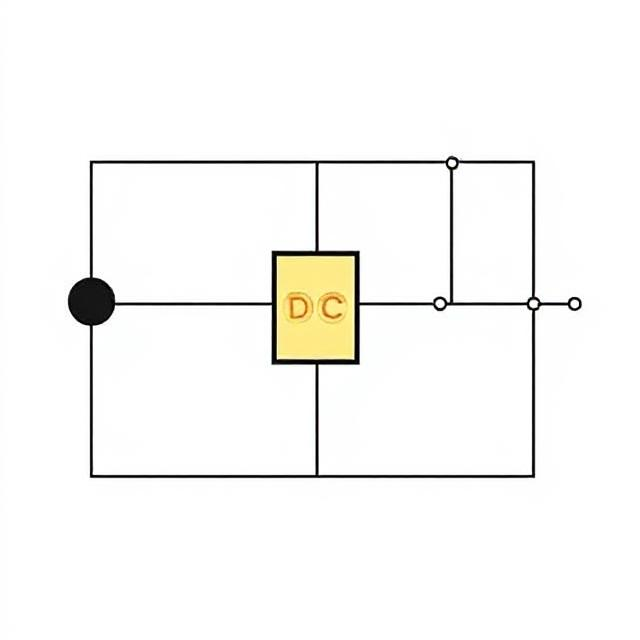Electricity flows in two main forms: Direct Current (DC) and Alternating Current (AC). While DC flows in one constant direction, AC changes direction periodically. AC is the form of electricity used in homes and industries worldwide. Understanding AC Circuit Theory is essential for anyone learning electrical or electronic engineering.

What is AC (Alternating Current)?
Alternating Current is a type of electrical current where the voltage and current change direction repeatedly over time. In most countries, AC oscillates at 50 Hz or 60 Hz, meaning it changes direction 50 or 60 times per second.
AC Waveform
-
The most common AC waveform is sine wave.
-
It has a smooth, repetitive oscillation.
Key terms:
-
Frequency (f): Number of cycles per second (in Hertz, Hz).
-
Amplitude: Maximum voltage or current value.
-
Period (T): Time taken for one full cycle (T = 1/f).
-
Phase: Describes the shift between waveforms (measured in degrees or radians).
Basic Elements in AC Circuits
AC circuits can include three main passive components:
1. Resistors (R)
-
Oppose current flow.
-
In AC circuits, voltage and current are in phase (no time delay).
-
Power is continuously converted into heat.
Ohm’s Law (AC):
2. Inductors (L)
-
Store energy in a magnetic field.
-
In an AC circuit, current lags behind voltage.
-
Impedance increases with frequency.
Inductive Reactance:
3. Capacitors (C)
-
Store energy in an electric field.
-
In AC circuits, current leads voltage.
-
Impedance decreases with frequency.
Capacitive Reactance:
Impedance (Z)
In AC circuits, resistance alone isn’t enough. Instead, we use impedance (Z), which includes resistance and reactance (from capacitors and inductors).
-
Measured in ohms (Ω).
-
Has both a magnitude and a phase angle.
-
Represented as a complex number:
where
is the imaginary unit and
is reactance.
Phasors: Simplifying AC Analysis
To simplify analysis, we use phasors, which are rotating vectors that represent sinusoidal functions.
-
Convert time-domain signals into the frequency domain.
-
Allow easier addition and subtraction of AC voltages/currents.
AC Power
In AC circuits, power varies over time. We focus on:
-
Instantaneous Power: Varies constantly.
-
Average Power (P): Useful power delivered:
where
is the phase angle between voltage and current.
-
Apparent Power (S):
-
Reactive Power (Q): Power stored and released:
Power Factor
The Power Factor (PF) is the ratio of real power to apparent power:
-
PF = 1: purely resistive circuit (efficient).
-
PF < 1: presence of inductance or capacitance (less efficient).
Simple AC Circuit Examples
1. Resistive AC Circuit
-
Voltage and current are in phase.
-
Power = maximum and efficient.
2. RL Circuit
-
Current lags voltage.
-
Power factor less than 1.
3. RC Circuit
-
Current leads voltage.
-
Also has a lower power factor.
Summary
AC Circuit Theory is the study of circuits powered by alternating current, where voltages and currents vary over time. It involves analyzing how resistors, capacitors, and inductors respond to AC signals. Key concepts include frequency, impedance, reactance, phasors, and AC power. Understanding these basics is crucial for designing and working with real-world electrical systems, from home wiring to power grids.
Tags: AC Analysis, AC circuit design, AC Circuits, AC power, AC power calculations, AC power theory, AC signal analysis, AC signals, AC waveform characteristics, alternating current (AC), alternating current waveform, Amplitude, apparent power, average power, capacitance, capacitive behavior, capacitive reactance, capacitors, Circuit Components, complex number, current, direct current (DC), efficient power transfer, electrical current, electrical engineering, electrical signal processing, electrical systems, energy release, energy storage, Frequency, frequency domain, home wiring, impedance, impedance formula, impedance magnitude, Impedance Matching, impedance phase, inductance, inductive behavior, inductive reactance, inductors, instantaneous power, Ohm’s Law (AC), period, phase, phasors, Power Factor, power factor calculation, power grids, power transfer, RC circuit, reactance, reactive power, real power, resistance, resistive AC circuit, Resistors, RL circuit, RMS current, RMS voltage, signal analysis tools, sine wave, voltage, voltage-current relationship


